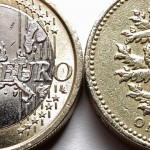US dollar traded in proximity to its highest point on Friday against its Canadian peer, following the release of slightly disappointing Canadian GDP data and mixed US data.
USD/CAD reached a session high at 1.0560 at 15:38 GMT, after which consolidation followed at 1.0554. Support was likely to be found at August 29th low, 1.0480, while resistance was to be met at July 9th high, 1.0574.
Today it became clear that Canadian economy expanded during the second quarter of the year, almost in line with preliminary estimates, as support was provided by the strong increase in consumer spending, which demonstrated its best performance in the past two years. However, on a monthly basis economy shrank in June, as this was the largest monthly decline since the global recessionary period of 2009. Canadian GDP rose by an annual rate of 1.7% during Q2, while experts had projected a 1.6% rise. This result came after the 2.2% gain, recorded during the first three months of the year, which was a revision down from a 2.5% gain previously due to weaker than anticipated increase in export. In monthly terms, GDP contracted by 0.5% in June, because of the stronger decrease in activity in construction. Preliminary estimates pointed a lesser drop in the monthly GDP, by 0.4%.
Meanwhile, the US Bureau of Economic Analysis said earlier on Friday that personal spending in the country recorded a modest increase in the month of July, introducing shreds of uncertainty over the stability of the pace at which recovery was going. Spending increased by 0.1% during July, while expectations pointed a 0.3% gain. Personal income also rose by 0.1% during the same month, below the projected 0.2% rise. Since the rate of increase in income and expenditures was equal, the rate of savings remained unchanged in July at 4.4%. Inflation, gauged by the core personal consumption expenditures (PCE) index, which excludes volatile components such as food and energy costs, accelerated by 0.1% in July, after the 0.2% rise in June, suggesting that inflationary pressure still remained low. The rate of increase in consumer expenditures during June was revised up to a 0.6% gain, according to recent government data.
At the same time, markets were still on edge, amid concerns over an impending US-led military campaign against Syria, following the alleged usage of chemical weapons near Damascus last week. The White House said on Thursday that President Barack Obama will decide on a response to Syria, based on US interests, but will continue to consult with the United Kingdom despite the fact that the British Parliament expressed a negative vote to a possible military intervention.
Elsewhere, the loonie, as the Canadian currency is also known, was higher against the euro and the sterling, with EUR/CAD cross decreasing by 0.35% to trade at 1.3902 at 16:26 GMT, while GBP/CAD pair lost 0.26% on a daily basis to trade at 1.6293 at 16:26 GMT.





